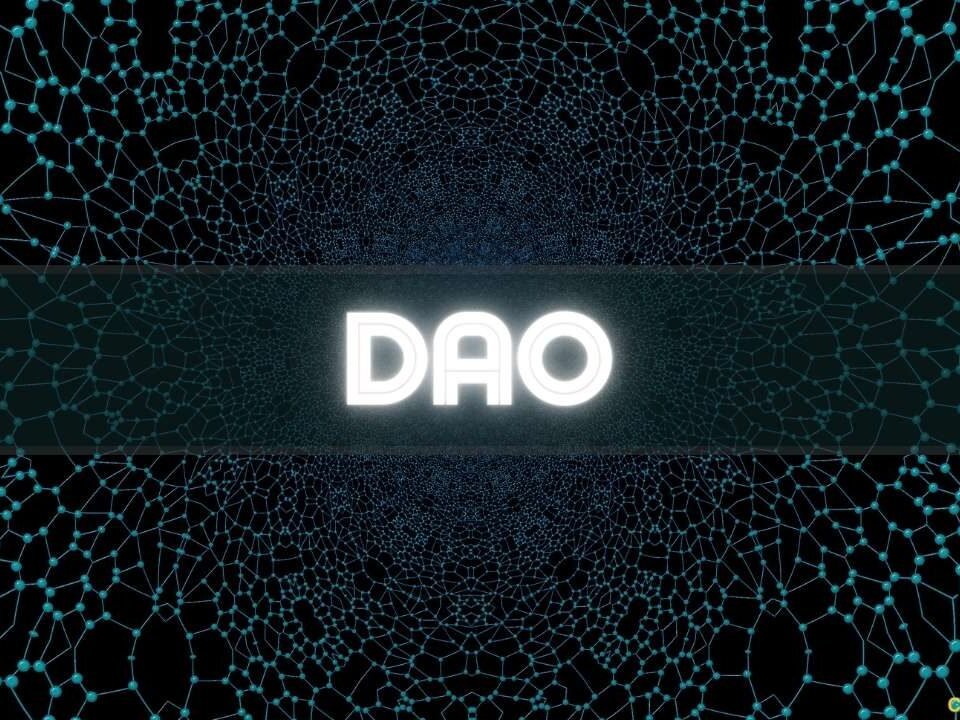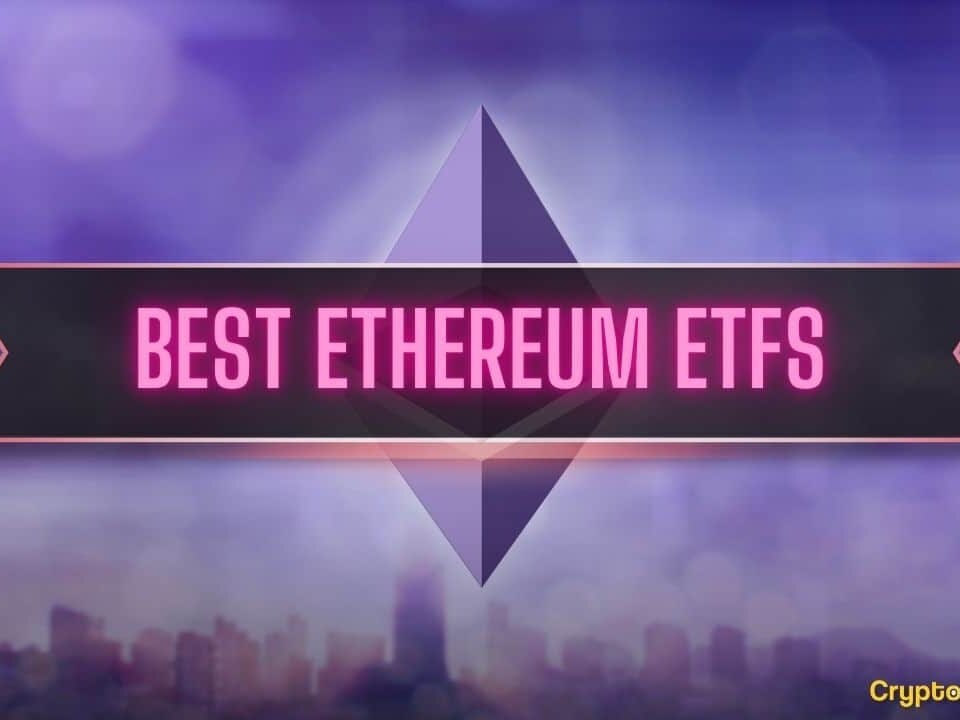
What is Azuki? All You Need to Know About the NFT Collection
November 10, 2024
Complete Guide to the Hardware Wallet
November 10, 2024
Blockchain’s moon race is on because the ecosystem grapples with creating scalable options to satisfy demand with out sacrificing safety or decentralization—the traditional blockchain trilemma.
The fast development in decentralized finance, NFTs, and gaming has seen adoption congest the Ethereum community, particularly. Given its capability for processing only some transactions per second, this results in bottlenecks and excessive transaction charges, rendering many dApps usable at instances.
Ethereum’s transition to a proof-of-stake sharded community could alleviate a few of that stress on layer 1. Sharding splits the Ethereum community into new chains or shards to unfold the load, cut back congestion, and enhance transactions per second.
Nonetheless, given full deployment remains to be years away and participation isn’t displaying indicators of slowing down any time quickly, the urgent want for scalable options has accelerated the adoption of layer 2 expertise that runs on high of Ethereum’s layer 1 quite than making an attempt to enhance efficiency on the base layer.
Layer 2 and associated expertise provide a number of totally different options for Ethereum scaling, every with its personal advantages and trade-offs, together with:
- Plasma
- Sidechains
- State Channels and Fee Channels
- Optimistic Rollups
- ZK-Rollups
- Validium
- Aggregators
However earlier than we dive into the specifics, let’s take a look on the fundamentals.
Layer 1 Defined
So, what’s layer 1? It’s the base community and underlying infrastructure of a blockchain platform. The principle community is answerable for validating and finalizing all on-chain transactions with out relying on one other community. This implies the bottom layer defines the principles of the ecosystem. L1 protocols even have native tokens used for transaction charges or gasoline charges.
Each base community has its personal mechanism for nodes to succeed in a consensus, comparable to proof-of-work (PoW) and proof-of-stake (PoS). Nonetheless, there’s a quite common idea within the business generally known as the blockchain trilemma, the place a community can obtain two of the three predominant objectives – safety, scalability, and decentralization – however not all three collectively. This was popularized by Ethereum’s co-founder, Vitalik Buterin.
Layer 1 blockchains comparable to Bitcoin and Ethereum deal with decentralization and safety whereas sacrificing scalability – the power to deal with many transactions. That is the place layer 2 protocols are available. Builders construct L2 options on L1 to resolve scalability points.
What’s Layer 2 and How Does it Work?
Layer 2 protocols are options constructed on high of a base community to assist scale transactions and information. L2 serves as an extension or a secondary framework for his or her respective predominant networks.
So how does it work? Layer 2 networks course of transactions in giant bundles on their very own earlier than submitting proof of the transactions to the bottom layer. This course of is often known as “off-chain” scaling, and it takes an enormous load off the bottom community.
L1 focuses on safety, decentralization, and information availability, whereas L2 handles scalability. This makes all the blockchain ecosystem extra scalable because the base community is much less congested. So mainly, it’s teamwork.
Now, let’s get extra particular.
Plasma
Plasma chains are separate blockchains that anchor to Ethereum, typically known as baby chains, as they function as smaller copies of the Ethereum mainnet. These baby chains use a mix of sensible contracts and cryptographic verification to dump transactions from the mother or father chain.
Every has its personal mechanism for block validation, and plasma chains periodically report again to the Ethereum predominant chain, utilizing its safety to settle disputes when challenged through fraud proofs.
Plasma chains allow excessive throughput at a low price per transaction. Nonetheless, solely fundamental transactions like token transfers and swaps are supported, there’s a liveliness requirement, and chain withdrawals might be prolonged to permit for challenges.
A number of tasks present implementations of Plasma for dApp integration, together with OMG Community and LeapDAO.
It’s price noting, although, that Plasma Group (the Ethereum analysis group) ceased working and donated the remaining of its funds to Gitcoin for use on optimistic rollups.
Sidechains
Layer 2 sidechains are unbiased Ethereum Digital Machine (EVM) suitable blockchains working parallel to the Ethereum predominant chain. Validator nodes within the sidechain community are answerable for confirming and processing transactions, including blocks, and sustaining the sidechain’s personal consensus guidelines, comparable to proof-of-authority or delegated proof-of-stake, to offer extra environment friendly transactions.
Compatibility is achieved through a two-way bridge to Ethereum, although its safety isn’t straight inherited and is the accountability of the sidechain.
Sidechains make the most of established expertise and help extra advanced transactions with EVM compatibility. Nonetheless, they’re much less decentralized and depend on their very own consensus mechanisms quite than the safety of layer 1, in order that they aren’t technically layer 2 in that sense.
Initiatives providing sidechain implementations embrace POA Community and xDai chain.
State Channels and Fee Channels
One of many first broadly mentioned layer 2 scaling options, state channels use multi-signature contracts to allow members to transact shortly and steadily off-chain, settling again to layer 1 for finality as required.
State channels can handle extra advanced interactions like a recreation, whereas cost channels are simplified state channels that solely cope with funds between two members. State channels enable for terribly excessive transaction throughput at a really low price, making them ideally suited for micropayments. Nonetheless, the time and price to arrange and settle channels will not be ideally suited for one-off funds; liveliness is required, and funds need to be locked up in open cost channels.
The principle tasks leveraging state channels on Ethereum are Celer, Perun, and Raiden.
Optimistic Rollups
Optimistic rollups sit in parallel to the Ethereum predominant chain on layer 2. They permit transactions to be executed cheaply and scalably in batches exterior layer 1 whereas nonetheless utilizing the safety of the Ethereum base layer when submitting them as a single transaction.
As computation is the gradual and costly ingredient of the Ethereum community, optimistic rollups provide as much as 100 instances scalability enhancements as they don’t run any computation by default, a quantity that may enhance additional with the long run introduction of Ethereum sharding.
As a substitute, optimistic rollups assume transactions are legitimate and solely run computation if challenged through fraud-proof. Optimistic rollups use a bonding system, and anybody confirmed answerable for a fraudulent transaction or problem will forfeit their bond. Some bonds are slashed, and others are used to incentivize the proper celebration.
Optimistic rollups can deal with something accomplished on Ethereum layer 1 as they’re EVM and Solidity suitable. As all transaction information is saved on the layer 1 chain, optimistic rollups stay safe and decentralized. On the identical time, they supply execution scalability. Nonetheless, lengthy wait instances for on-chain transactions are potential on account of potential fraud challenges.
Optimistic rollups help each easy funds and complicated sensible contracts, making them extra instantly appropriate for DeFi functions. Optimism, Arbitrum, and Cartesi are among the many a number of tasks providing implementations.
In an indication of the area’s future route, the main DEX platform Uniswap lately introduced it will be taking the following step in adopting layer 2 tech by launching on Optimism to sharply cut back transaction prices for its customers.
ZK-Rollups
Zero-knowledge rollups, or ZK-rollups, bundle transactions off-chain and generate a cryptographic proof, generally known as a SNARK. In distinction to optimistic rollups, ZK-rollups run computation off-chain and submit these validity proofs to the layer 1 chain.
ZK-rollup sensible contracts preserve the state of all transactions on layer 2, which may solely be up to date with validity proof. As ZK-rollups solely want proof of validity quite than all of the transaction information, validating a block is faster and cheaper because it consists of much less information and requires much less gasoline.
Moreover, because the ZK-rollup contract has already verified the transactions, shifting from layer 2 to layer 1 isn’t delayed.
Because of this, ZK-proofs provide sooner finality instances whereas remaining safe and decentralized because the information wanted to recuperate the state is saved on Ethereum layer 1. Nonetheless, some ZK-rollups should not have EVM help, and validity proofs are intensive to compute, making them unsuitable for dApps with little on-chain exercise.
A number of implementations of ZK-rollups additionally exist, together with zkSync and ZKSwap. zkSync affords a trustless protocol for scalable, low-cost funds on Ethereum utilizing ZK-rollup expertise, serving to crypto wallets and defi platforms unlock PayPal-like scale. ZKSwap supplies a ZK-rollups-based layer 2 DEX with zero gasoline charges and excessive transaction throughput, remodeling the way forward for the AMM mannequin.
Concord’s interoperable layer 2 for Ethereum affords one thing extra distinctive, combining the most effective of each the optimistic and ZK-rollup worlds. Concord supplies full EVM compatibility, not like ZK-rollups, sooner settlement with shorter withdrawal instances in comparison with Optimistic rollups, and gas-efficient interoperability primarily based on its sharded Proof-of-Stake blockchain that bridges to Ethereum through sensible contracts.
By constructing on the advantages of each Optimistic rollups and ZK-rollups, typically seen to be probably the most promising of layer 2 scaling applied sciences, whereas addressing their shortcomings, Concord can present a extra wholescale answer for tasks to deploy. Concord’s interoperability additionally extends past Ethereum with its Horizen bridge to Binance Sensible Chain, opening up entry to the broader defi ecosystem.
Validium
Validium makes use of validity proofs like ZK-rollups, however as a substitute, information isn’t saved on Ethereum layer 1, permitting for scalability of as much as 10,000 transactions per second per Validium chain, of which a number of can run in parallel.
Validium affords no withdrawal delays, enhancing capital effectivity, and isn’t susceptible to sure financial assaults confronted by high-value dApps utilizing fraud-proof-based methods. Nonetheless, Validium chains have restricted sensible contract help.
Initiatives offering implementations of Validium embrace Loopring and StarkWare. Immutable X, the primary layer 2 scaling answer for NFTs on Ethereum, makes use of StarkWare’s Validium and ZK-rollup expertise to allow transaction speeds of over 9,000 per second with zero gasoline charges whereas retaining Ethereum’s safety for its ecosystem of marketplaces, apps, and video games.
Aggregators
Polygon is one thing of an aggregator of those layer 2 options, providing a number of implementations of a number of layer 2 applied sciences. Because of this, Polygon has change into the fastest-growing layer 2 community, bringing blockchain infrastructure to the plenty by opening up the accessibility, usability, and use circumstances of decentralized functions on Ethereum’s web of blockchains.
Polygon’s suite of layer 2 scalability options has witnessed adoption from Defi blue chips, with platforms like Aave, SushiSwap, and 1inch already integrating with it.
CVI, the decentralized volatility index for the crypto area powered by the COTI community, has additionally adopted that lead in integrating with Polygon. CVI customers can open positions and supply liquidity and stake whereas processing transactions out of the principle ETH blockchain.
Bitcoin Lightning Community
The Lightning Community (LN) is Bitcoin’s hottest layer 2 scaling answer. It was proposed in 2016 to resolve the Bitcoin community’s scalability points by processing transaction bundles at a lightning-fast velocity.
Like different L2 scaling options mentioned above, LN takes a number of transactions from the mainnet and processes them off-chain by means of micropayment channels earlier than returning the transaction information.
Though the Lightning Community was initially designed to scale Bitcoin, cryptocurrencies comparable to Litecoin and Dogecoin have additionally built-in the answer.
Advantages of Layer 2 Networks
Scalability: Scalability offers with transaction throughput and velocity. In different phrases, it ensures increased transactions are processed per second with sooner completion. Many base networks choose to sacrifice scalability for decentralization or safety, which ends up in congestion throughout excessive community utilization.
Layer 2 networks remedy this downside as they assist blockchain ecosystems to scale with out compromising safety or decentralization.
Decrease charges: As talked about earlier, L2 bundles a number of transactions and submits them to the mainnet as a single transaction. This helps to scale back transaction charges, making the bottom layer cheaper and sooner.
Keep Safety: Safety and decentralization are the core focus of layer 1 networks. Since layer 2 chains are constructed on high, customers can profit from the safety of the first blockchain.
Drawbacks of Layer 2 Networks
Liquidity Discount: Liquidity is a vital side of the crypto market. Layer 2 networks can cut back the liquidity of their main blockchains, which should be strong and liquid always.
Could Require A number of Accounts: When a number of L2 options are constructed on high of a community, the L1 and its totally different functions would require extra bridges to make sure clean communication between the 2 layers. This implies end-users will usually need to create a number of accounts to switch funds between the totally different protocols. The method might be daunting, particularly since customers have to trace the motion of their belongings always.
Safety Considerations: Whereas this can be a matter of implementation, the previous 12 months noticed a number of bridging options getting hacked, resulting in a whole bunch of thousands and thousands price of cryptocurrency being compromised.Â
Abstract
No single scaling answer alone is ample to satisfy Ethereum 2.0’s safe, decentralized, and scalable imaginative and prescient and keep away from the issues of excessive charges and bottlenecks.
Sharding will definitely assist on-chain scaling on layer 1, however off-chain layer 2 options that may flexibly tailor to the distinctive necessities and acceptable trade-offs of the plethora of dApp tasks being developed are key to the way forward for blockchain.
The ecosystem as a complete is bigger than the sum of its elements, and totally different layer 2 options can exist and work collectively in concord to answer the growing calls for of mainstream adoption, persevering with to assist cut back congestion and stop single factors of failure as we transition to the world of Net 3.0.
Binance Free $600 (CryptoPotato Unique): Use this hyperlink to register a brand new account and obtain $600 unique welcome provide on Binance (full particulars).
LIMITED OFFER 2024 at BYDFi Alternate: As much as $2,888 welcome reward, use this hyperlink to register and open a 100 USDT-M place at no cost!



















